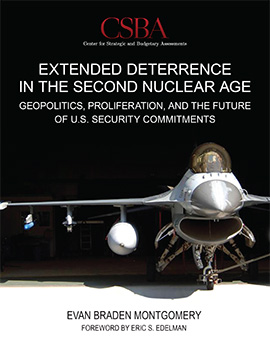
Ever since the early days of the Cold War, extended nuclear deterrence has been one of the most important but challenging aspects of American strategy. During the past 25 years, however, many of the extended deterrence dilemmas that preoccupied U.S. policymakers in the past ceased to be a major source of concern. That is starting to change. With the return of great power security competition and the emergence of a second nuclear era, a number of questions have once again become relevant: Is the United States' current approach to extended nuclear deterrence likely to remain adequate? Does it have the right tools in place to prevent competitors from challenging the status quo and to convince allies that they can rely on Washington? If not, how might it adapt its extended nuclear deterrence posture to preserve stability across the regions that concern it most?
Center for Strategic and Budgetary Assessments' (CSBA) Senior Fellow Dr. Evan Montgomery’s Extended Deterrence in the Second Nuclear Age: Geopolitics, Proliferation, and the Future of U.S. Security Commitments report provides an overview of U.S. extended nuclear deterrence commitments and how Washington plans to uphold them; describes the main challenges to extended nuclear deterrence in Europe, East Asia, and the Middle East; and sketches out what updated extended nuclear deterrence postures might look like across all three regions in light of these challenges.



























